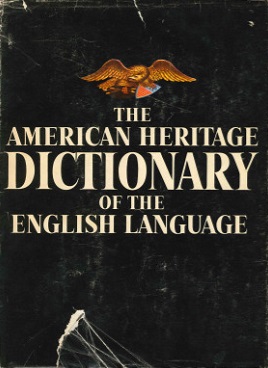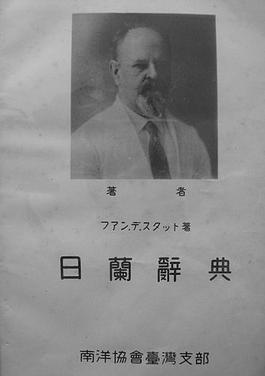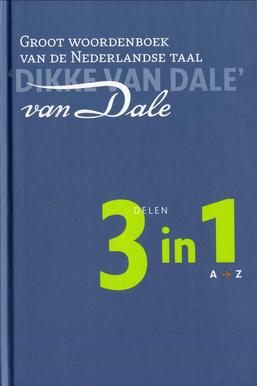
A dictionary is a listing of lexemes from the lexicon of one or more specific languages, often arranged alphabetically, which may include information on definitions, usage, etymologies, pronunciations, translation, etc. It is a lexicographical reference that shows inter-relationships among the data.

Interlingua is an international auxiliary language (IAL) developed between 1937 and 1951 by the American International Auxiliary Language Association (IALA). It is a constructed language of the "naturalistic" variety, whose vocabulary, grammar, and other characteristics are derived from natural languages. Interlingua literature maintains that (written) Interlingua is comprehensible to the hundreds of millions of people who speak Romance languages, though it is actively spoken by only a few hundred.

The Oxford English Dictionary (OED) is the principal historical dictionary of the English language, published by Oxford University Press (OUP). It traces the historical development of the English language, providing a comprehensive resource to scholars and academic researchers, as well as describing usage in its many variations throughout the world.

Scheveningen is one of the eight districts of The Hague, Netherlands, as well as a subdistrict (wijk) of that city. Scheveningen is a modern seaside resort with a long, sandy beach, an esplanade, a pier, and a lighthouse. The beach is popular for water sports such as windsurfing and kiteboarding. The harbour is used for both fishing and tourism.
International scientific vocabulary (ISV) comprises scientific and specialized words whose language of origin may or may not be certain, but which are in current use in several modern languages.
Webster's Dictionary is any of the English language dictionaries edited in the early 19th century by Noah Webster (1758–1843), an American lexicographer, as well as numerous related or unrelated dictionaries that have adopted the Webster's name in his honor. "Webster's" has since become a genericized trademark in the United States for English dictionaries, and is widely used in dictionary titles.

The American Heritage Dictionary of the English Language (AHD) is a dictionary of American English published by Boston publisher Houghton Mifflin, the first edition of which appeared in 1969. Its creation was spurred by the controversy over the perceived permissiveness of the Webster's Third New International Dictionary. The third edition included over 350,000 entries and meanings.

The Dutch Language Union is an international regulatory institution that governs issues regarding the Dutch language. It is best known for its spelling reforms which are promulgated by member states, grammar books, the Green Booklet and its support of Dutch language courses and studies worldwide. It was founded on a treaty concluded between the Netherlands and Belgium on 9 September 1980. Suriname has been an associate member of the Taalunie since 2004.
The Woordenboek der Nederlandsche Taal is a dictionary of the Dutch language. It contains between 350,000 and 400,000 entries describing Dutch words from 1500 to 1976. The paper edition consists of 43 volumes on 49,255 pages. It is believed to be the largest dictionary in the world in number of pages. The dictionary was nearly 150 years in the making from 1849; the first volume was published in 1864, and the final volume was presented to Albert II of Belgium and Beatrix of the Netherlands in 1998.

An electronic dictionary is a dictionary whose data exists in digital form and can be accessed through a number of different media. Electronic dictionaries can be found in several forms, including software installed on tablet or desktop computers, mobile apps, web applications, and as a built-in function of E-readers. They may be free or require payment.

Interlingual machine translation is one of the classic approaches to machine translation. In this approach, the source language, i.e. the text to be translated is transformed into an interlingua, i.e., an abstract language-independent representation. The target language is then generated from the interlingua. Within the rule-based machine translation paradigm, the interlingual approach is an alternative to the direct approach and the transfer approach.

Nichi-Ran jiten is a Japanese–Dutch dictionary compiled by Peter Adriaan van de Stadt and originally published by the Taiwanese branch of Nan'yō Kyōkai in 1934. It has about 33,800 entries. As of 2011, a second edition has not been published, but at least one facsimile edition was published in 1989 by the current Nan'yō Kyōkai, now based in Tokyo.
The Interlingua–English Dictionary (IED), developed by the International Auxiliary Language Association (IALA) under the direction of Alexander Gode and published by Storm Publishers in 1951, is the first Interlingua dictionary of the world.
The IED includes about 27,000 words drawn from about 10,000 roots, but the bulk is given by about 600 classical latin roots, being an Anglo-Latin dictionary with English as the primary control language of the biggest romance languages .
For each etymological family the dictionary highlight the primitive word followed by very many cognates words. This method of condensing in a framework the etymological derivation has been taken up by the best multilingual and etymological modern dictionaries.
The IED dictionary also presents 125 affixes that facilitate to understand the neolatin linguistic word-formation. Its full title is Interlingua: A Dictionary of the International Language.

The Dictionary of Old English (DOE) is a dictionary of the Old English language, published by the Centre for Medieval Studies, University of Toronto, under the direction of Angus Cameron, Ashley Crandell Amos, Antonette diPaolo Healey, and Haruko Momma. It complements the Oxford English Dictionary's comprehensive survey of modern English, the Middle English Dictionary's comprehensive survey of Middle English, and the Scottish Language Dictionaries surveys of Scots.

Van Dale's Great Dictionary of the Dutch Language, called Dikke Van Dale for short, is the leading dictionary of the Dutch language. The latest edition was published in April 2022.
Dutch profanity can be divided into several categories. Often, the words used in profanity by speakers of Dutch are based around various names for diseases. In many cases, these words have evolved into slang, and many euphemisms for diseases are in common use.
Maurits Gysseling was an influential Belgian researcher into historical linguistics and paleography. He was especially well known for his editions and studies of old texts relevant to the history of the Dutch language, and also for his very detailed analyses of historical place-names and their probable origins.

Flemish (Vlaams) is a Low Franconian dialect cluster of the Dutch language. It is sometimes referred to as Flemish Dutch, Belgian Dutch, or Southern Dutch. Flemish is native to the region known as Flanders in northern Belgium; it is spoken by Flemings, the dominant ethnic group of the region. Outside of Belgium Flanders, it is also spoken to some extent in French Flanders and the Dutch Zeelandic Flanders.
A historical dictionary or dictionary on historical principles is a dictionary which deals not only with the latterday meanings of words but also the historical development of their forms and meanings. It may also describe the vocabulary of an earlier stage of a language's development without covering present-day usage at all. A historical dictionary is primarily of interest to scholars of language, but may also be used as a general dictionary.

A pan-Romance language or Romance interlanguage is a codified linguistic variety which synthesizes the variation of the Romance languages and is representative of these as a whole. It can be seen as a standard language proposal for the whole language family but is generally considered a zonal constructed language because it's the result of intense codification. Zonal languages are, according to interlinguist Detlev Blanke, constructed languages which "arise by choosing or mixing linguistic elements in a language group".












